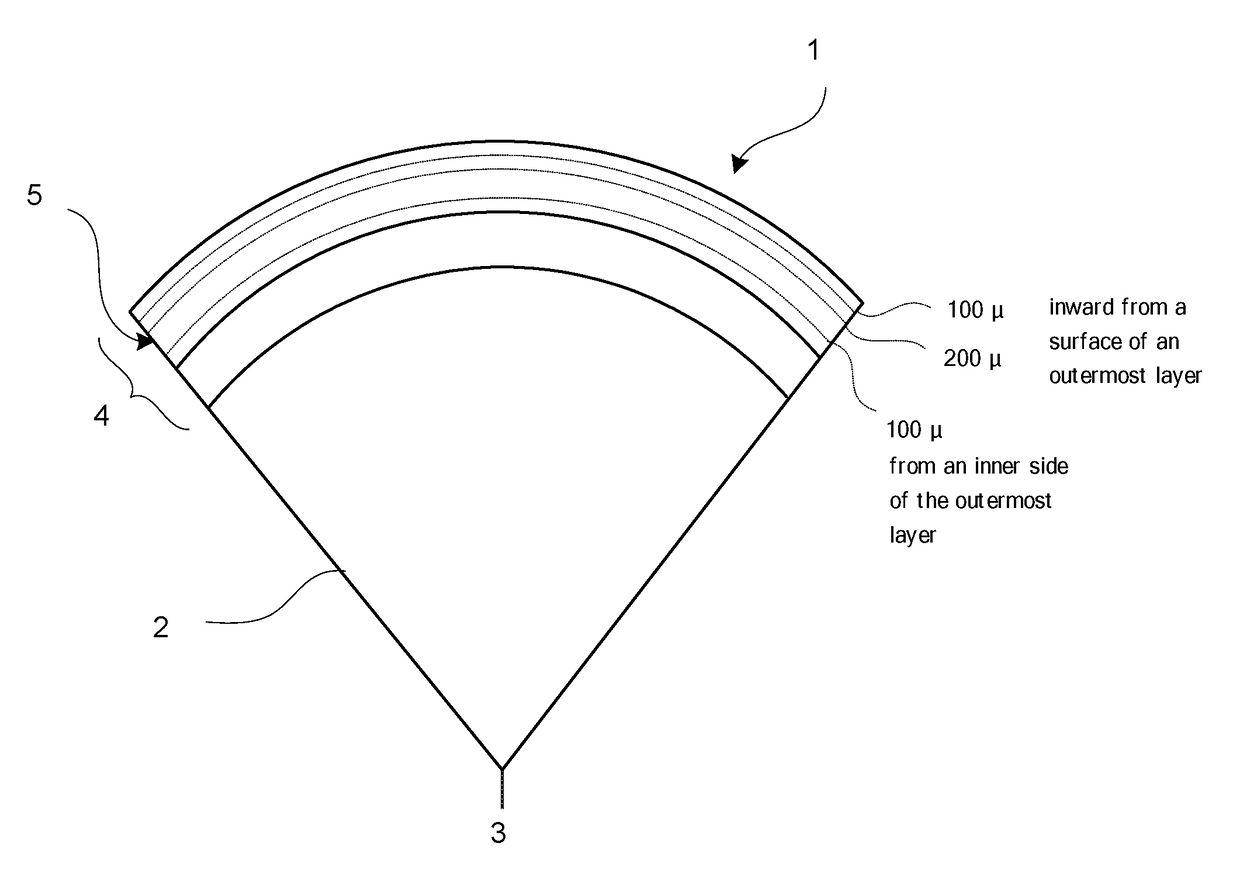Golf ball
a golf ball and ball technology, applied in the field of golf balls, can solve the problems of inferior scuff resistance of golf balls, inferior productivity and cost of general-purpose urethanes, and inability to achieve good approach shots, and achieve excellent approach shots. scuff resistance and spin properties
- Summary
- Abstract
- Description
- Claims
- Application Information
AI Technical Summary
Benefits of technology
Problems solved by technology
Method used
Image
Examples
examples
[0063]Working Examples of the invention and Comparative Examples are given below by way of illustration, although the invention is not limited by the following Examples.
examples 1 to 19
, Comparative Examples 1 to 9
[0064]Cores having a diameter of 36.3 mm were produced by using the formulation shown in Table 1 to prepare a core-forming rubber composition common to all the Examples, then curing and molding at 155° C. for 15 minutes. Next, cover layers (these being, in order from the inside: an envelope layer and an intermediate layer) formulated of the various resin materials shown in the same table and common to all the Examples were successively injection-molded over the core, thereby giving an intermediate sphere. The envelope layer had a thickness of 1.3 mm and a material hardness, expressed in terms of Shore D hardness, of 51. The intermediate layer had a thickness of 1.1 mm and a material hardness, expressed in terms of Shore D hardness, of 62.
[0065]The outermost cover layer, which differs in each Example, was injection-molded over the intermediate sphere. The resin materials used to form the outermost layer are shown in Table 2. The outermost layer had a thic...
PUM
 Login to View More
Login to View More Abstract
Description
Claims
Application Information
 Login to View More
Login to View More - R&D
- Intellectual Property
- Life Sciences
- Materials
- Tech Scout
- Unparalleled Data Quality
- Higher Quality Content
- 60% Fewer Hallucinations
Browse by: Latest US Patents, China's latest patents, Technical Efficacy Thesaurus, Application Domain, Technology Topic, Popular Technical Reports.
© 2025 PatSnap. All rights reserved.Legal|Privacy policy|Modern Slavery Act Transparency Statement|Sitemap|About US| Contact US: help@patsnap.com


